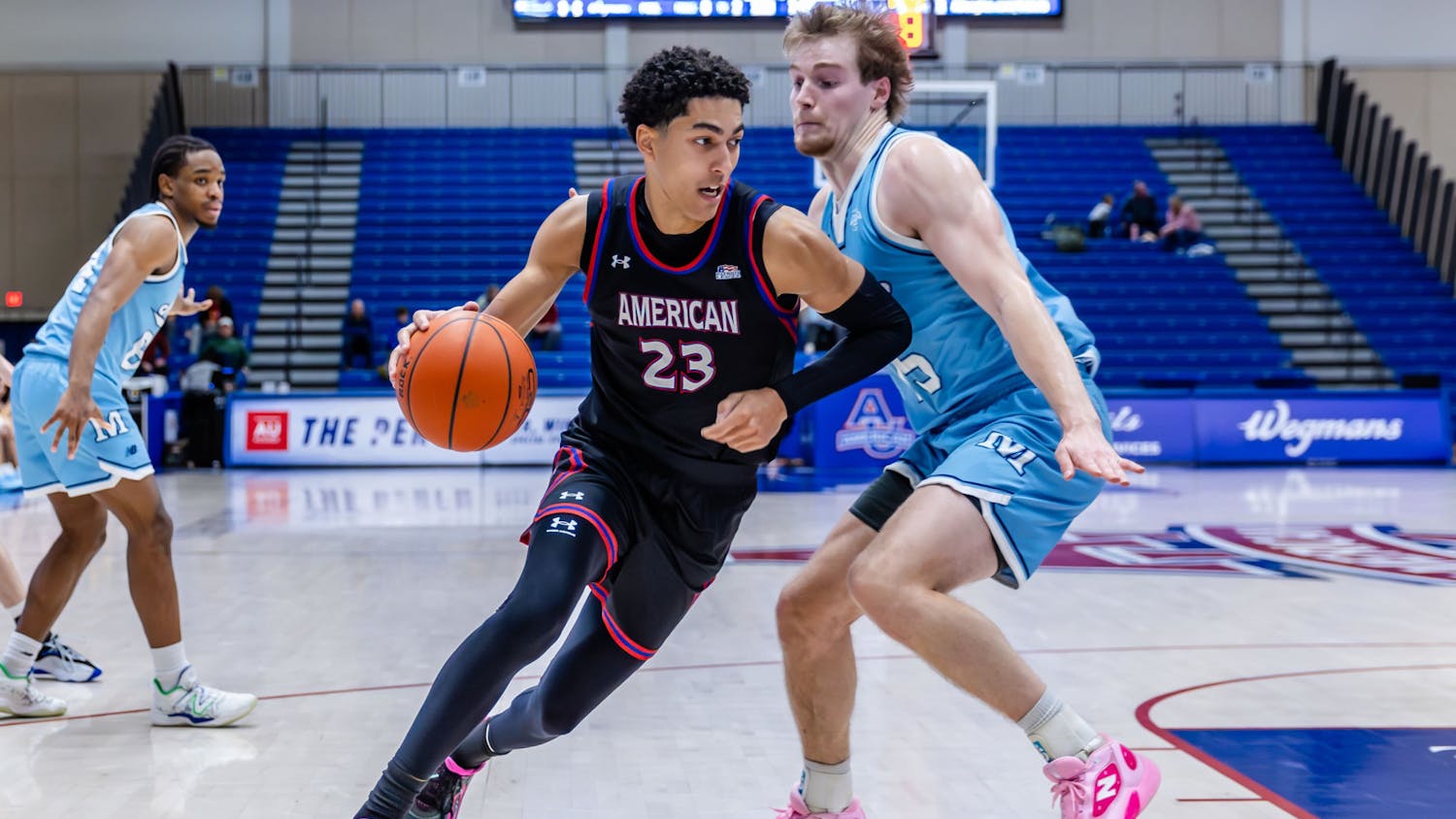In 1965, baseball's Houston Astros got a quick horticultural lesson: Grass grows best outside.
After their first season in the Astrodome, their natural-grass field withered away. So they replaced it with the growing technology of synthetic turf, and thus began turf wars, which have divided athletes, fans and sports medicine experts.
Some 40 years later, the issue has come to AU with the recent opening of the artificial turf field at the Jacobs Recreational Complex. On it, varsity and intramural teams face new challenges of sharing surface turf that some athletes have derided as an injury hazard.
The field hockey and women's lacrosse teams, along with recreational sports, all use the facility. The turf is the surface of choice for field hockey because its uniformity makes play fast and predictable.
The facility has gotten high praise from the AU field hockey team, which is ranked fifth in the country and is finally playing on campus after shuttling to the University of Maryland the last few years.
"We absolutely love it," said senior defender Caroline Vo. "The turf and the surface is great, but it's more of the principle of home and having a place we can call our home. Just knowing that we have a place that's ours makes us want to play and gives us that extra support that we didn't have before."
Coach Steve Jennings said he researched other facilities and said the AU field is "one of the best in the nation." The AstroTurf 12 surface is found at facilities of other top-ranked field hockey programs, such as three-time national champion Wake Forest.
The surface on which field hockey thrives has been called dangerous by athletes from other sports. Like a natural grass field, the synthetic turf gives under pressure, but many athletes believe it's more taxing on joints. The short-cut fibers also make it more abrasive than the real thing, contributing in a turf version of rug burn.
Some members of AU's intramural flag football teams have grown suspect of the new field. Chris Kalna, a Kogod junior, said he suffered a medial collateral ligament sprain during a recent game. He said he'd played on artificial turf in high school, but this one was the worst and that other intramural athletes have attributed injuries to it.
"When you go down on it, it tears you up," Kalna said.
There has never been a conclusive study to settle the turf debate, although many athletes have spoke out against it.
This year's annual NFL Players Association survey showed more than 90 percent of the players believe chances of injury are greater on carpet. The two most-disliked fields - at the RCA Dome in Indianapolis and the Edward Jones Dome in St. Louis - were AstroTurf, not modern field turf.
Comparing different types of turf can be difficult, said Sean Dash, AU's head athletic trainer. Natural grass fields can vary widely. If overused, the surface becomes more compact, harder and more hazardous than most turf fields.
Dash said he hadn't heard complaints from AU athletes about synthetic turfs and injuries, and didn't label them a health hazard.
"We do things to minimize injury, to get people in good condition," he said. "But if an injury will occur, it will occur. Playing on AstroTurf, from an intramural standpoint, the best thing an intramural athlete can do is to be prepared [by being in good condition]."
AU isn't alone in giving recreational sports an AstroTurf surface. At the University of Maryland, students play flag football on a new set of turf facilities. Wake Forest and Duke, ranked ahead of the AU field hockey team, share their fields with the rest of the students.
Danny Keitel, the assistant director of recreational sports, said he had not heard any concerns from intramural athletes about the surface. If anything, the field has been seen as a positive for the athletic department. The extra playing area has helped the number of flag football teams grow by roughly a third to nearly 40, he said.
But Kalna, recovering from his knee sprain, is wary of intramural athletes continuing to play on the field.
"It's something that needs to be addressed," he said.
Contributing Writer Katie Munro contributed to this report.




